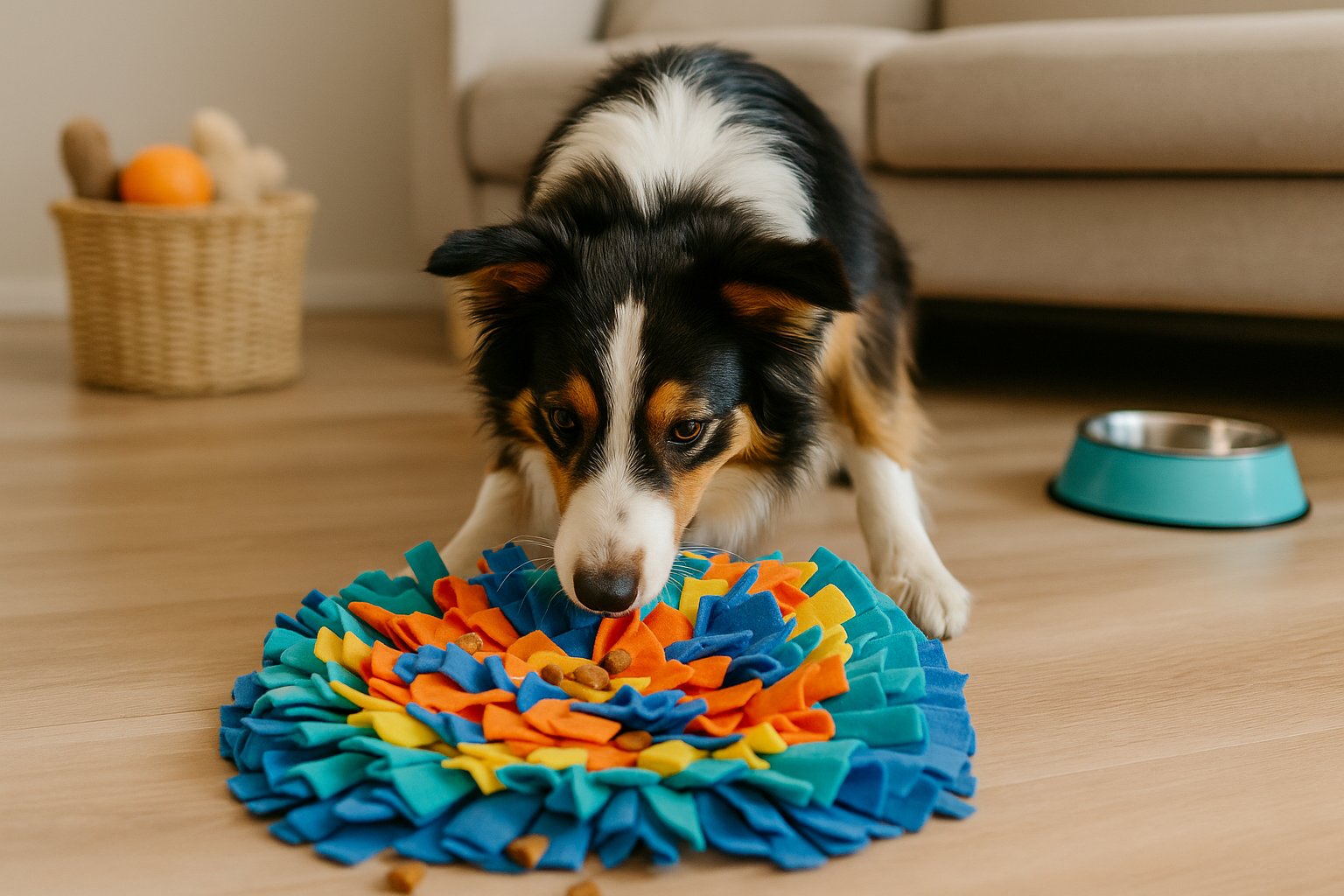
Modern dogs live safer, longer lives—but they also face a new challenge: boredom. Without regular mental and physical stimulation, dogs can develop anxiety, destructive behaviors, or even health issues. The solution? Dog enrichment ideas that you can implement at home, easily and affordably.
Enrichment helps dogs tap into their natural instincts—like sniffing, problem-solving, and play. Whether you’ve got a couch potato pup or a high-energy herder, adding enrichment into their daily routine is a game-changer.
🧠 What Is Dog Enrichment?
Enrichment is all about providing activities that fulfill your dog’s mental, physical, and emotional needs. It can include:
- Problem-solving games
- Scent-based activities
- Interactive toys
- Training sessions
- Outdoor exploration
Just 15–30 minutes of enrichment a day can reduce problem behaviors and improve your dog’s quality of life.
🎾 Interactive Dog Enrichment Ideas
These ideas are fun, effective, and often use things you already have at home:
1. Muffin Tin Puzzle
Place dog treats in a muffin tin and cover each cup with a tennis ball. Let your pup sniff out the snacks and figure out how to move the balls.
2. Snuffle Mats
These fabric mats mimic grass and are designed for dogs to “forage” for treats. You can purchase one or make your own with fleece strips.
3. Frozen Treats
Fill a Kong with peanut butter, canned food, or plain yogurt and freeze it. It keeps dogs occupied and provides sensory stimulation.
4. Hide-and-Seek
You can hide treats around the house or even hide yourself for your dog to find. Great for recall practice too!
5. DIY Cardboard Challenge
Use toilet paper rolls or cardboard boxes filled with crumpled newspaper and hidden treats. It’s recycling and a brain game.
🚶♀️ Enrichment Through Movement
Mental stimulation doesn’t always have to be a puzzle. Moving their body and experiencing new environments is a fantastic form of enrichment.
- Go for a “sniffari” (let your dog sniff freely on a walk)
- Vary your walking route
- Let them safely explore new textures (grass, gravel, sand)
- Try low-impact agility or obstacle courses in your yard
You can also look into local Southwest Florida trails that welcome leashed pets. Check out our blog on pet-friendly spots for ideas!
🧩 Training As Enrichment
Dogs love having a job. Reinforcing basic commands or learning new tricks is mentally taxing and incredibly rewarding for them.
Start with:
- Nose targeting
- Spin, sit pretty, or roll over
- Touch a bell to ask to go outside
Short sessions (5–10 minutes) with lots of praise and high-value treats will do wonders. You don’t need to be a trainer—just be consistent and positive.
💡 Why Enrichment Matters
Without appropriate outlets, dogs may act out with chewing, barking, digging, or anxiety. Enrichment doesn’t “fix” a dog—it helps meet their needs so those behaviors become unnecessary.
Studies show that dogs offered daily enrichment show reduced cortisol levels and improved cognitive function over time (Horowitz, 2020). Enrichment is a wellness tool—not a luxury.
🐕🦺 When You Need Extra Support
Sometimes, a little extra help goes a long way. If your pup needs more stimulation than you can consistently provide—especially on busy workdays—Qualified Pet Services offers drop-in visits and exercise-focused care tailored to each dog’s needs.
We’re staffed by experienced veterinary professionals who understand dog behavior and enrichment best practices.
📚 References
- Horowitz, A. (2020). Being a dog: Following the dog into a world of smell. Scribner.
- American Kennel Club. (2022). Brain games for dogs: Canine enrichment ideas. https://www.akc.org/expert-advice/training/brain-games-for-dogs/
- ASPCA. (n.d.). Dog behavior enrichment. https://www.aspca.org/pet-care/dog-care/common-dog-behavior-issues/enrichment
- Preventive Vet. (2023). Dog enrichment: Ideas to prevent boredom & bad behavior. https://www.preventivevet.com/dogs/dog-enrichment-ideas-to-prevent-boredom
⚠️ Disclaimer:
Always supervise your dog when introducing new toys, puzzles, or activities. Consult your veterinarian if your dog has dietary restrictions, physical limitations, or behavioral issues.


